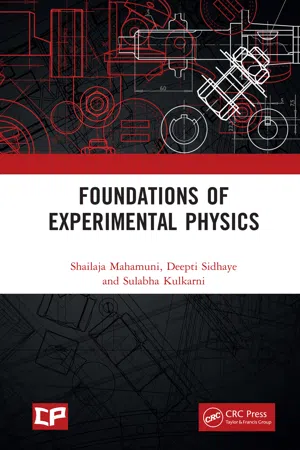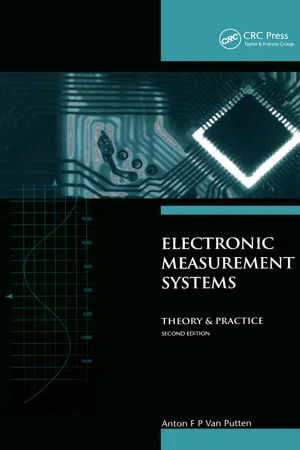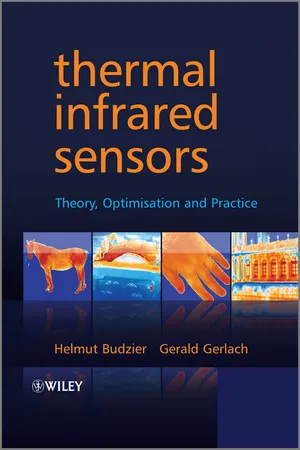Physics
Noise Sensitivity
Noise sensitivity refers to the degree to which a system or device is affected by external disturbances or fluctuations, known as "noise." In physics, it is a measure of how susceptible a system is to random variations in its environment, and is often quantified in terms of signal-to-noise ratio. Understanding and managing noise sensitivity is crucial in fields such as electronics, telecommunications, and signal processing.
Written by Perlego with AI-assistance
3 Key excerpts on "Noise Sensitivity"
- eBook - ePub
- Shailaja Mahamuni, Deepti Sidhaye, Sulabha Kulkarni(Authors)
- 2020(Publication Date)
- CRC Press(Publisher)
2Improving Signal-to-Noise Ratio
2.1 Introduction
Noise, simply put, is any unwanted signal that interferes with the detection of the desired signal. For example, while listening to a specific sound, other background sounds (such as people talking, traffic, environmental sounds etc.) act as distractors and therefore can be considered as acoustic noise. Someone walking in front of you while you are watching TV can be considered as visual noise. The crackling sound that you may hear while listening to radio is caused by system noise. In this chapter, we will focus on the system noise, particularly that in an electrical system.In today’s experiments, a physical quantity is converted into an electrical signal, and is quantitatively measured in terms of either the electrical current or the voltage. These measurements are not free of noise-induced errors. The measured value of a quantity 5 can be represented ass = x + δ x(2.1)where x is the actual value of the quantity and δx is the measurement error. When every measurement is consistently smaller or larger than the actual value, it is considered as a ‘systematic error’ or an ‘offset’. Noise-induced errors, however, tend to be random or unpredictable. For reliable and accurate estimation of the actual value, it is necessary to minimise the influence of random, noise-induced errors in the measured value. A simple and the most common way to reduce the contribution of random noise is to average multiple measurements of the same quantity. The underlying assumption is that the actual value of the quantity remains constant across measurements, while the random noise is averaged out. Thus, the empirical estimation of the actual value obtained from N - eBook - ePub
Electronic Measurement Systems
Theory and Practice
- A.F.P van Putten(Author)
- 2019(Publication Date)
- CRC Press(Publisher)
table 4.1 two other sensitivities are mentioned, i.e. the cross-sensitivity and the directional sensitivity. Usually, the cross-sensitivity is a parasitic effect. In particular in sensors cross-sensitivity is a disturbing effect affecting the output signal with undesired physical parameters.* * *Example 4.6Consider a piezoelectric positioner with a voltage sensitivity of 1 mV μm−1 and a temperature sensitivity of —10 μV K−1 From this it can be derived by division that a change of 10 μ V corresponds to a change in position of 10 nm. Thus the parasitic temperature sensitivity is −10 nm K−1 .* * *Example 4.7Consider a simple analogue temperature measurement system with a sensitivity of 100 mV K−1 In the system an amplifier is involved which appears to have a temperature sensitivity resulting in an output change of 0.1 mV K−1 . The parasitic temperature sensitivity can be expressed as 1/1000 K K−1 or 1 mK K−1 . In other words, a temperature change in another part of the system than the temperature sensor itself can affect the output.* * *Ultimately, the sensitivity can be made extremely high by electronic means, theoretically without any limit. However, going beyond certain limits no longer makes sense, because the real physical limit in sensitivity is noise. Noise is just a collective noun for a number of mechanisms which are inherently present in every component. The subject of noise is dealt with in chapters 9 and 10 . We stress already here that noise and interference have different causes and will be treated separately. Many authors confuse these two mechanisms.4.2.5LinearityAs can be seen from (4.6) if a strict linear behaviour of the transfer characteristic is involved, the sensitivity is independent of the x value. If the system is non-linear then the sensitivity is a function of x and y. It will be clear that in practical circumstances a linear behaviour is preferred, e.g. because the sensitivity can be specified with one number. This is illustrated in a exaggerated form in figure 4.2 - eBook - ePub
Thermal Infrared Sensors
Theory, Optimisation and Practice
- Helmut Budzier, Gerald Gerlach(Authors)
- 2011(Publication Date)
- Wiley(Publisher)
Chapter 4 NoiseThe measuring uncertainty of infrared sensors und subsequently their resolution regarding the measured parameters (e.g. radiant flux, temperature, amongst others) is basically determined by noise processes. In the following, we will therefore present mathematical and physical basics of noise processes in thermal infrared sensors.4.1 Mathematical Basics 4.1.1 IntroductionWhen we talk about noise we actually mean small random variations of a signal.1 It has an unregular, random time pattern that cannot be predicted. Noise is a stochastic process. Mathematically, distribution and density functions can be used to describe stochastic processes. Noise can therefore be described with expected value E and variance σ2 or distribution σ. Inserting measured noise values in a histogram, we arrive at a frequency distribution (Figures 4.1.1 and 4.1.2 ). We distinguish between continuous (steady) and discrete noise processes.Figure 4.1.1 Continuous noise (normal distribution).(a) 100 normally distributed measured values of the amplitude of a measured parameter; (b) histogram of the measuring values from (a) (solid line) and theoretical density (broken line) with expected value E = 0 and variance σ = 1 (normalised normal distribution)Figure 4.1.2 Discrete noise (POISSON distribution). (a) 100 POISSON-distributed measured values of the amplitude of a measured parameter with discrete values; (b) histogram of the measured values from (a) (squares) and theoretical density function (lines) with expected value E = 10Continuous processes can adopt any amplitude value. An example would be thermal noise (Figure 4.1.1 ). Continuous processes often follow a normal distribution.Discrete processes can adopt only specific values that are integer multiples of a physical parameter. An example would be current noise. In this case, there occur fluctuations, that is, the random creation and extinction of charge. The frequency of this process follows a POISSON distribution (Figure 4.1.2
Index pages curate the most relevant extracts from our library of academic textbooks. They’ve been created using an in-house natural language model (NLM), each adding context and meaning to key research topics.
Explore more topic indexes
Explore more topic indexes
1 of 6
Explore more topic indexes
1 of 4


